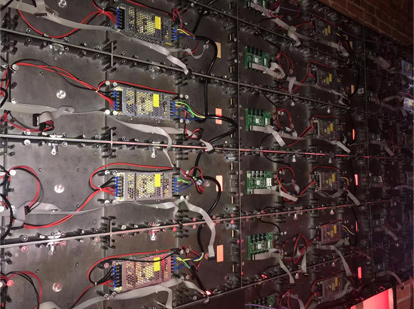In the world of LED displays, the “send card” (also known as a sending card or transmitter card) plays a crucial role in delivering high-quality visuals. This small but powerful device acts as the bridge between the content source and the LED screen, ensuring your graphics, videos, and images display clearly and consistently. In this guide, we’ll explore what a send card is, how it functions, and why it’s essential for optimal LED display performance.
1. What is a Send Card?
A send card is an electronic component in LED displays that converts video or image data from a source device (such as a computer or media player) into a format that the LED display can process. It essentially “sends” the content data to the receiving card, which then organizes the data for individual LED modules, ensuring that each pixel displays accurately and without delay.

2. The Key Functions of a Send Card
The send card handles several essential tasks that directly affect the quality and reliability of LED displays:
a. Data Conversion
The send card takes content from external sources, converting it into the proper format for the LED display to read and display. This conversion process ensures that the content appears at the intended resolution, colors, and quality.
b. Signal Transmission
After converting the data, the send card transmits it to the receiving card(s) via cables. This transmission is critical in LED displays, especially for larger installations where multiple receiving cards are involved in dividing the display area.
c. Display Synchronization
For seamless visuals, the send card synchronizes the content across different sections of the LED display. This synchronization eliminates issues like tearing or lag, especially in large LED setups where multiple receiving cards manage different screen parts.
d. Brightness and Color Adjustments
Many send cards allow users to adjust brightness, contrast, and color settings. This flexibility is crucial for adapting the display to various environments, such as outdoor or indoor spaces with different lighting conditions.
3. Types of Send Cards
Depending on the application and LED display size, several types of send cards are available:
a. Standard Send Cards
Standard send cards are ideal for small to medium-sized LED screens and basic applications. They offer essential functionalities like data transmission and synchronization but may not support advanced configurations for larger installations.
b. High-Performance Send Cards
For large LED displays or high-resolution screens, high-performance send cards offer superior processing power and support for higher data rates. They are often used in environments requiring high-definition content, like outdoor advertising, stage performances, and sports arenas.
c. Wireless Send Cards
Some send cards come with wireless connectivity options, which are advantageous for installations where cabling is impractical. They provide flexibility and allow users to control and update content remotely.
4. How to Install a Send Card in an LED Display
Installing a send card is relatively straightforward but requires careful attention to ensure proper functionality. Here are the basic steps:
Locate the send card slot on the controller or media player.
Insert the send card firmly into the designated slot. Make sure it’s securely connected to avoid signal interruptions.
Connect the display to the send card using compatible cables (usually Ethernet or HDMI).
Configure the settings through software provided by the send card manufacturer. This step ensures the display settings, such as brightness and resolution, are adjusted to your specifications.
Test the display to verify that all parts of the LED screen are working properly, with no dead pixels, lag, or color inconsistencies.
5. Common Issues with Send Cards and Troubleshooting Tips
Despite their reliability, send cards can sometimes encounter issues. Here are a few common problems and ways to troubleshoot:
a. No Display or Black Screen
Check the connections between the send card, computer, and receiving cards.
Ensure the send card is firmly inserted and that all cables are connected securely.
b. Poor Image Quality or Distorted Colors
Adjust the display settings on the send card software, focusing on brightness, contrast, and color settings.
Check if the send card firmware is up to date, as manufacturers occasionally release updates to resolve known issues.
c. Lag or Signal Delay
Verify that the send card is compatible with your LED display size and type.
For large screens, consider using high-performance send cards to handle high-resolution data smoothly.
6. Choosing the Right Send Card for Your LED Display
When selecting a send card, consider the following factors to ensure compatibility and performance:
Screen Size and Resolution: Higher-resolution displays typically require high-performance send cards.
Installation Environment: Outdoor displays may need send cards with additional weatherproofing or protective features.
Control Requirements: If you need to control the display remotely, look for send cards with wireless connectivity options.
Content Type: For fast-motion videos or dynamic content, invest in a send card that supports high data rates for smoother playback.
7. Final Thoughts
In an LED display system, a send card is the unsung hero that ensures your content is delivered precisely as intended. By converting and transmitting data efficiently, it maintains the integrity of visuals across the entire screen, enhancing the audience’s viewing experience. Whether setting up a small indoor display or a large-scale outdoor LED wall, choosing and configuring the right send card is essential for optimal performance.
Post time: Oct-29-2024

